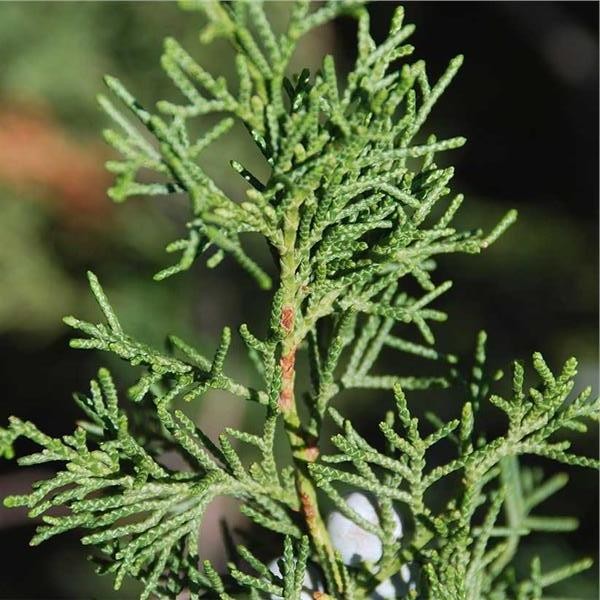Shore juniper
(Juniperus rigida conferta)

Description
Juniperus conferta (shore juniper) is a species of juniper, native to Japan, where it grows on sand dunes. It is often treated as a variety or subspecies of Juniperus rigida. It forms a cover with a fresh green color reminiscent of lawn. The foliage is prickly, typical of many junipers. The plant can tolerate acidic and alkaline soils but requires good drainage. Conferta is derived from Latin. "Con" meaning together and "ferta" meaning strong. Junipers are coniferous trees and shrubs in the genus Juniperus of the cypress family Cupressaceae. Depending on taxonomic viewpoint, between 50 and 67 species of junipers are widely distributed throughout the Northern Hemisphere, from the Arctic, south to tropical Africa, throughout parts of western, central and southern Asia, east to eastern Tibet in the Old World, and in the mountains of Central America. The highest-known juniper forest occurs at an altitude of 4,900 metres (16,100 ft) in southeastern Tibet and the northern Himalayas, creating one of the highest tree lines on earth. Junipers vary in size and shape from tall trees, 20–40 metres (66–131 ft) tall, to columnar or low-spreading shrubs with long, trailing branches. They are evergreen with needle-like and/or scale-like leaves. They can be either monoecious or dioecious. The female seed cones are very distinctive, with fleshy, fruit-like coalescing scales which fuse together to form a "berry"-like structure (galbulus), 4–27 millimetres (3⁄16–1+1⁄16 in) long, with one to 12 unwinged, hard-shelled seeds. In some species, these "berries" are red-brown or orange, but in most they are blue; they are often aromatic and can be used as a spice. The seed maturation time varies between species from 6 to 18 months after pollination. The male cones are similar to those of other Cupressaceae, with 6 to 20 scales. In zones 7 through 10, junipers can bloom and release pollen several times each year. A few species of junipers bloom in autumn, while most species pollinate from early winter until late spring. Many junipers (e.g. J. chinensis, J. virginiana) have two types of leaves; seedlings and some twigs of older trees have needle-like leaves 5–25 mm (3⁄16–1 in) long, and the leaves on mature plants are overlapping, scale-like, and (mostly) tiny, measuring 2–4 mm (3⁄32–5⁄32 in). When juvenile foliage occurs on mature plants, it is most often found on shaded shoots, with adult foliage in full sunlight.
Taxonomic tree:







